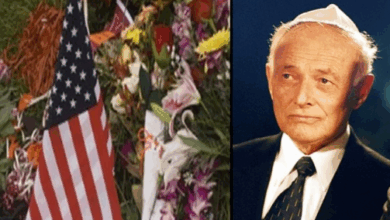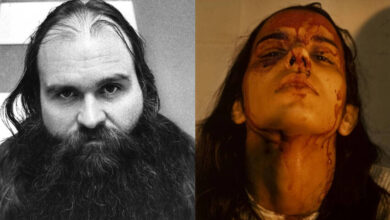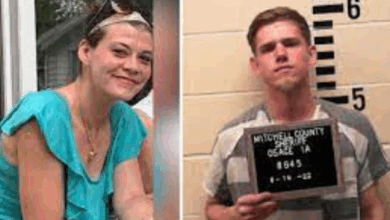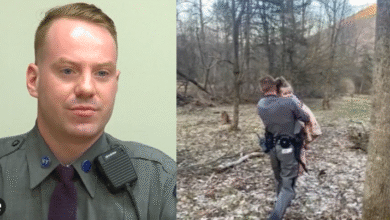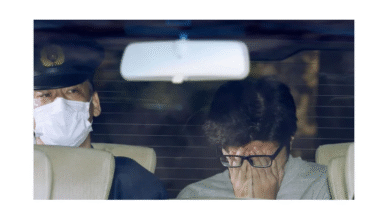The Tragic True Stories Behind Some Of Hollywood’s Biggest Child Stars
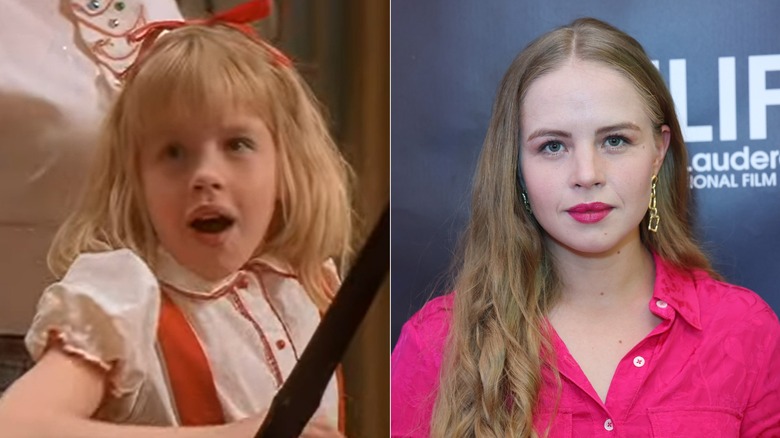
From Shirley Temple to the Two Coreys, these iconic child actors endured hardships invisible in their onscreen lives.
It is no secret that the lives of Hollywood performers are often fraught with difficulties. But when the performers in question are children, the results of living in the spotlight are often even more tragic. Indeed, the intense scrutiny that comes with maturing in Hollywood has spelled the downfall of some of the industry’s most beloved child actors.
There are more fortunate cases, which sadly seem few and far between, where some young performers were able to transcend the bizarre and concerning circumstances of their upbringing to lead productive and even fairly grounded lives.
From the trials and tribulations of a 16-year-old Judy Garland on the notoriously difficult set of the beloved classic film, The Wizard of Oz, to the shocking details behind Drew Barrymore’s underage foray into the very adult inner sanctum of Hollywood, the passage of time into a more enlightened and modern world has not guaranteed that life for a child star will be any easier.
While more rigid regulations and guidelines are now in place to prevent outward abuse and overworking, the ethical concerns regarding the privacy and overall wellbeing of child actors remain.
Perhaps by remembering the stories of young stars from yesteryear in the context of better understanding mental health and substance abuse, we can undo this stigma of young has-beens.
Remembering Shirley Temple’s Infant Burlesque
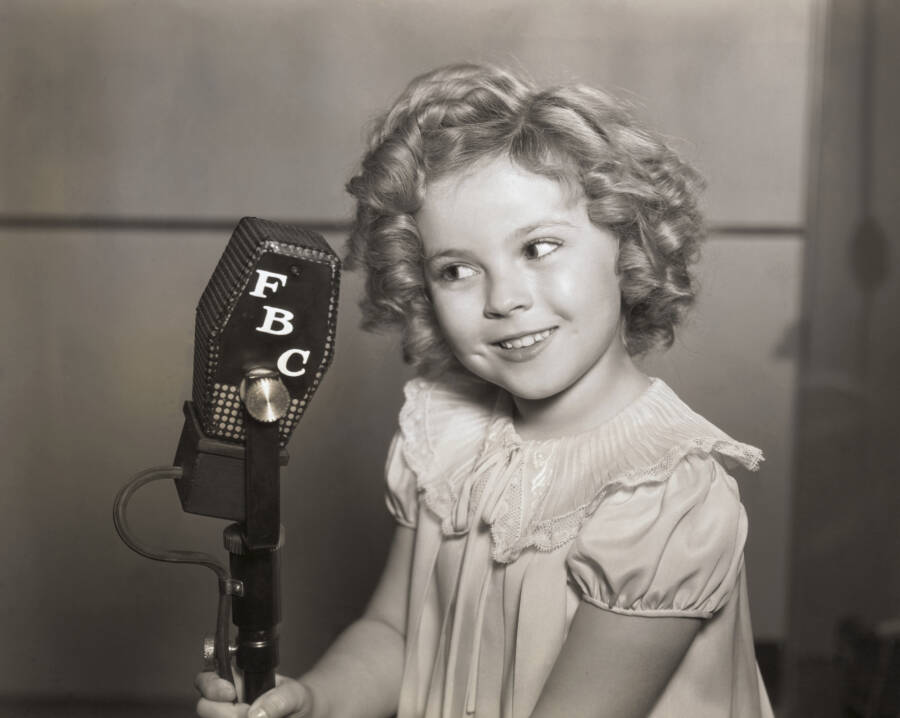
Getty ImagesChild actor Shirley Temple was renowned for her innocent charm, but her beginnings were not so.
The Curly Top child star of the Great Depression had a questionable Hollywood origin story — not that she could be held accountable for this at just three years old.
Shirley Temple was perhaps the nation’s first true child star, known as she was far and wide at the dawn of the film industry. Famous for her plucky attitude, adorable dancing, and maybe most famously, her mop of curly red hair, Temple quickly became a beacon of innocence and joy in the midst of the Great Depression of the 1930s.
Yet while she is closely associated with happy-go-lucky films such as Curly Top and The Littlest Rebel, the beginning of her storied career is undoubtedly marred by some rather seedy practices. Indeed, before she was a bonafide Hollywood phenomenon, Shirley Temple appeared in a set of films known as Baby Burlesks.
These pre-code era films featured a cast comprised entirely of toddlers playing parodies of much more mature films that touched on current events, films of the day, actors, actresses, and politics. While the concept itself may seem innocuous, the children of the Baby Burlesks were required to perform in skimpy clothing and mimic adult scenarios.
In one such film, entitled War Babies, Shirley Temple is seen wearing a loose-fitting top that seems almost purposely designed to slip and fall down her arms in a suggestive way. But perhaps the most concerning aspect of the film lies in the fact that Temple is required to channel the mannerisms and demeanor of a prostitute.
From performing a caricature of a seductive dance to being referred to as “baby” by a band of sailors also played by barely-dressed young boys, to even calling herself “expensive,” Shirley Temple’s role in War Babies is just one example of the ways in which Baby Burlesk took advantage of the innocence of child actors too young to understand or consent to the highly sexualized roles they had to play.
Temple would later go on to say that the films were “a cynical exploitation of our childish innocence” and that they “occasionally were racist or sexist.” As Shirley Temple’s career progressed, so too did some of the harsh rumors that spread about her.
At the height of her fame, rumors swirled that she was not a child at all but rather a 30-year-old dwarf. The story became so pervasive that the Vatican even dispatched a priest to confirm whether or not Temple was actually an adult.
Additional rumors spread that her hair was a wig which brought fans to make routine attempts to pull on her curls in the hopes of revealing a bald head.
Not only was Shirley Temple subjected to hard work and cruel rumors, but she was also deprived of a normal social life. In 2016, one of Temple’s oldest friends, Marilyn Granas who had served as her stand-in on many film sets, opened up about what life for Temple had been like:
“I did feel sorry for Shirley because her childhood was so unnatural. She didn’t get to go to public school. She didn’t have a lot of friends or get to do kid things, like ride bikes. On the set, it was exclusively the two of us. We never played with other kids.”
In the end, Shirley Temple’s childhood was, from start to finish, defined by her exposure in the public eye. Whether she was performing in salacious films that put toddlers in overtly sexualized scenarios or being harassed over assumptions about her physical appearance, Shirley Temple’s treatment as a child actor set an unfortunate precedent for the ways in which future young stars would be viewed.
Though Temple did manage to live a rather well-adjusted adult life serving time as the ambassador to Czechoslovakia, her origins can and should serve as a cautionary tale about the perils of Hollywood stardom at a tender age.
The Public Self-Destruction Of Judy Garland By Hollywood

WikiMedia CommonsGarland battled emotional issues and substance abuse even as a successful young starlet.
Known for her stunning voice and girlish charm, Judy Garland is perhaps one of the most iconic performers to ever come out of Hollywood’s Golden Age. With unforgettable roles like Dorothy Gale in The Wizard of Oz and Esther Smith in Meet Me in St. Louis, Garland holds a special place in the hearts and minds of generations of moviegoers.
Yet behind the glitz, glam, and innocent sense of wonder that some of her most popular films engendered, Judy Garland endured years of torturous pressure and abuse that lead to a lifetime of substance abuse and untimely death.
By the time Judy Garland was 13, she had signed with Metro-Goldwyn-Mayer Studios whose movie executives constantly criticized her physical appearance. At just four feet, eleven inches tall and with more of a girl-next-door look than fellow MGM stars Lana Turner and Elizabeth Taylor, Judy Garland’s outward appearance left the studio at a loss for where and how to use her.
Referred to as an “ugly duckling,” a “hunchback,” and a “fat little pig with pigtails” by studio head Louis B. Mayer, MGM insisted that Garland wear caps on her teeth and rubberized discs on her nose to help reshape it in the hopes of making her image more appealing. This constant barrage of derogatory remarks forced the young star to believe that she was in fact, unattractive.
But perhaps the most tragic outcome of her experience as a young person in Hollywood was her addiction to amphetamines. According to a statement she made later in life, Garland took drugs at the behest of MGM studio execs in order to keep up with the demands of the film industry. But then she also had to take barbiturates in order for her to sleep soundly.
This dangerous combination had her addicted to pills by the time she was just 15 and kickstarted a lifelong dependency that would lead to her ultimate demise in the late 1960s.
Nearly a year before filming began on the 1939 classic The Wizard of Oz, studio bosses at MGM began sharing memos to one another with comments about the teenage Judy Garland’s weight. And with the studio desperate for the character of Dorothy Gale to appear as young and girlish as possible, Garland was made to wear constricting corsets and layers to conceal her breasts and figure.
Garland was also forced to adhere to a diet around this time as well. She was given nothing but chicken soup, black coffee, cigarettes, and diet pills to sustain her.
Thus began Garland’s lifelong struggles with body image — and all from the treatment she received while a part of the MGM machine.
But Garland was also frequently on the receiving end of sexual advances from actors portraying the munchkins on the set of The Wizard of Oz and even studio head Louis B. Mayer himself.
Comparable to the now-infamous Hollywood producer Harvey Weinstein, Mayer is said to have groped Garland by placing his hand on her breast while she was performing a song in his office. And while on the set of The Wizard of Oz, the performers known as the munchkins of Munchkinland would invade her personal space.
In his posthumously published memoir, Garland’s husband Sid Luft corroborated these claims:
“They would make Judy’s life miserable on set by putting their hands under her dress. The men were 40 or more years old. They thought they could get away with anything because they were so small.”
By the time Garland was just 47 years old, she was nearly penniless, destitute, and deeply in debt. A life of self-doubt, substance abuse, and grueling physical and psychological torture had taken its toll. In June of 1969, Garland was found dead in her London apartment by her fifth and final husband, Mickey Deans.
The cause of her death was due to an overdose of barbiturates, one of the many drugs that she had become addicted to as a child.
At Garland’s funeral in New York City, her old co-star Ray Bolger who had once played the beloved Scarecrow in The Wizard of Oz said concisely: “She just plain wore out.”
The Swift Rise And Swifter Demise Of Corey Feldman
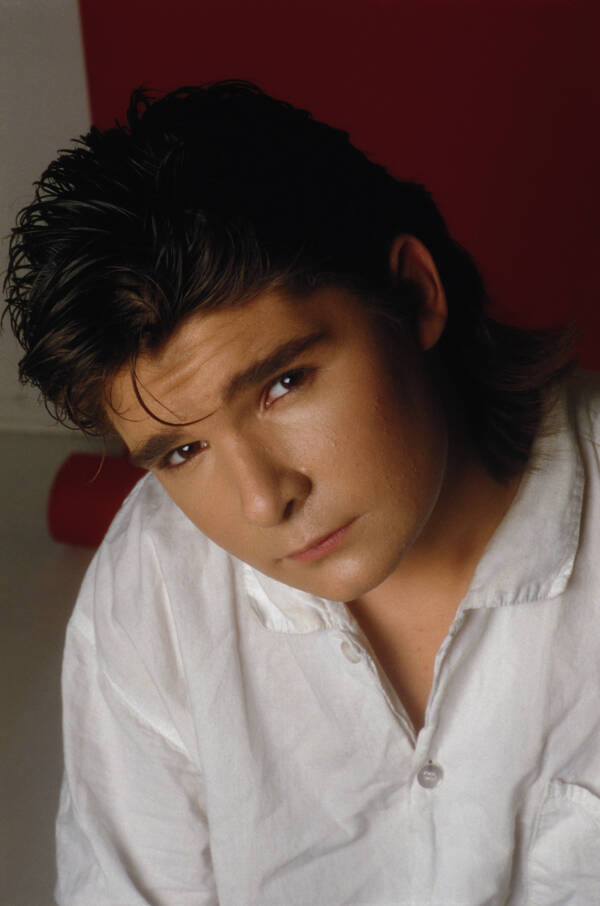
Epics/Getty ImagesFeldman in 1986.
From the pages of Tiger Beat magazine to hawking his CD collection on the streets, Corey Feldman’s fall from grace came hard and fast in the wake of the 1980s.
The 1980s had its fair share of teenage heartthrobs, but the ubiquitousness of Corey Feldman may take the cake.
Born in Reseda, California in 1971, Corey Feldman began his journey in Hollywood at the tender age of three when he appeared in a commercial for McDonald’s. He eventually went on to appear in over 100 ads.
Much like Judy Garland, the more work Feldman began to receive the more pressure he endured. Soon, his mother was feeding him diet pills to keep his weight down and even physically assaulting him if any mistakes were made on set or at auditions.
Slowly but surely Feldman began to secure more coveted roles, appearing in episodes of Cheers, Mork & Mindy, Eight is Enough, and One Day at a Time. It didn’t take long for Feldman to make the leap into films.
As a teen, he appeared in several high-grossing films released in rapid succession, including 1984’s horror-comedy Gremlins, 1985’s The Goonies, and 1986’s Stand By Me. Feldman’s rise to superstardom happened seemingly overnight. But the outward success could not undo his inner trauma.
At just 14, Corey Feldman began to be sexually molested by a man named Jon Grissom who had been hired as his assistant. Feldman has said that the abuse went on for over a year. Grissom would later serve time in prison in 2003 for child molestation.
Feldman also confirmed while appearing on the Dr. Oz Show that a man named Alphy Hoffman who ran a club frequented by the underage elite of Hollywood had also molested him during some of his many visits there.
In an interview with Rolling Stone in April 2019, Feldman said:
“These men were circling around me. Me and my best friend were surrounded, being tossed back and forth between them without our knowledge, and it was just horrendous… [Abuse] involves conditioning a child and grooming them and getting them ready for the days that they’re going to be molested. It involves putting people in place to make sure a kid is surrounded by only pedophiles.”
When asked about the rumors of abuse that circulated in the 1980s regarding “The Two Coreys,” a.k.a. Corey Feldman and fellow child actor Corey Haim, former Little House on the Prairie star Alison Arngrim said:
“People said, ‘Oh, yeah, the Coreys, everyone’s had them.’ People talked about it like it was not a big deal…I literally heard that they were ‘passed around.’ The word was that they were given drugs and being used for sex. It was awful — these were kids…There were all sorts of stories about everyone…that these two had been sexually abused.”
In the midst of the sexual abuse, Feldman began to experiment heavily with drugs. From smoking marijuana in his trailer to snorting cocaine, his reliance on these substances began to take a stronghold over his day to day life. By 1990, Feldman was standing on street corners selling his CD’s in order to earn enough money to purchase crack and heroin.
Five years later in 1995, Corey Feldman finally kicked his drug habit for good. While the former heartthrob and ’80’s icon has seen his career cool considerably, he is now a vocal critic of Hollywood and the ways in which the industry treats child actors. His advice on the matter?
“People always ask me about life after childhood stardom. What would I say to parents of children in the industry? My only advice, honestly, is to get these kids out of Hollywood and let them lead normal lives.”
The Other Half Of A Broken Heartthrob, Child Actor Corey Haim
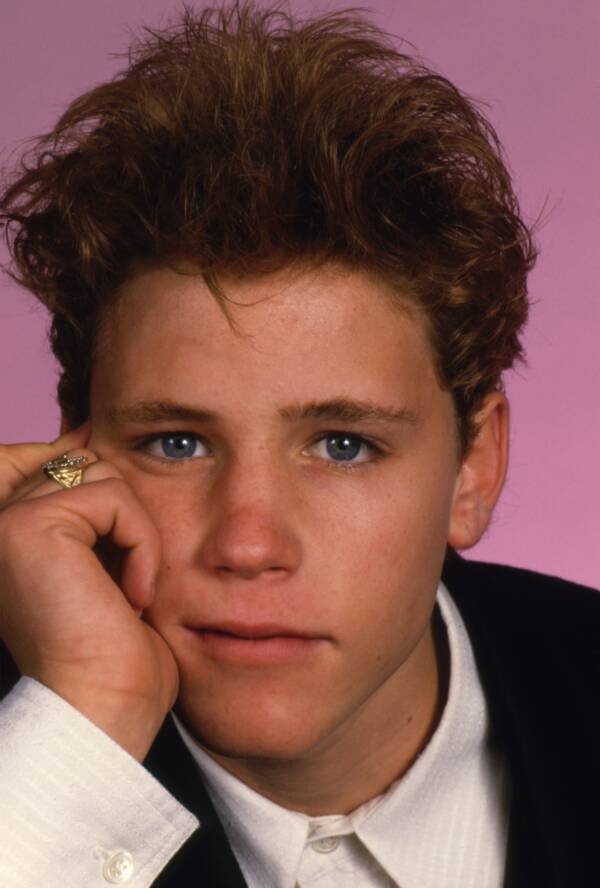
Ann Summa/Getty ImagesCorey Haim in 1987.
Haim was a true heartthrob with ambitions of becoming the next James Dean. What followed instead was a life of substance abuse and untimely death.
The other half of the “Two Coreys,” Corey Haim, was also a teenage heartthrob known for his rapid success in Hollywood — and also for his tragic downward spiral.
Born in Ontario, Canada in December 1971, Haim scored his first acting gig at 10 in the Canadian series The Edison Twins. Shortly after, he landed his first role on the big screen in 1984’s Firstborn where he starred alongside Sarah Jessica Parker and Robert Downey Jr.
While on the set of Firstborn, Haim complimented his co-star Peter Weller who in a fit of rage that he later attributed to his method acting, threw the 13-year-old Haim up against a wall.
They were eventually separated by a group of on-set assistants and Weller apologized. But the incident had a lasting impact on Haim, who later went on to say that the incident “terrified” him.
From there, a slew of additional parts came in, some of which garnered the child actor a great deal of critical acclaim, particularly for his starring role in the 1986 teen-dramedy Lucas.
It was around the time of this film that Haim had his first encounter with drugs and alcohol. He would later confess to tabloid magazines that he had had his first beer while on set.
These early brushes with substances are what undoubtedly helped lead the young actor down a dangerous path that would ultimately have no return.
In 1987, Corey Haim and Corey Feldman starred in the Joel Schumacher horror film The Lost Boys. The two became fast friends and the film was well-received.
Haim became even more popular and began receiving nearly 2,000 fan letters from young women and girls. He found the attention “a little frightening” and with more exposure and pressure than ever before, his experimentation with drugs and alcohol increased.
Speaking in later years about his experience as a young and vulnerable Hollywood star, Haim said, “I lived in LA in the 1980s, which was not the best place to be. I did cocaine for about a year and a half, then it led to crack.”
By the time the 2000s had arrived, Corey Haim’s career completely fizzled. He’d been reduced to taking bit parts in films, many of which were direct-to-video. He had also been in and out of rehab more times than he could count.
Addicted to opioids and desperate for cash, Haim had begun removing his teeth and cutting his hair in attempts to sell them online for extra money, all in an attempt to recoup some of the losses that had befallen him after falling out of the spotlight years prior.
Much like Feldman, Corey Haim also claimed to have suffered sexual abuse as a child while working in Hollywood.
As an adult struggling with addiction, Haim admitted that his issues could likely have stemmed from the abuse that began when he was just 14 or 15 years old.
In an interview with People magazine before his death by overdose at just 38 in 2010, Haim explained:
“I was ashamed, so I shut my mouth, and I just rolled with the punches, man. Stuff happens when you are a kid, it scars you inside for life. That is just how I look at it.”
In Corey Feldman’s memoir Coreyography, he claimed that Haim had confided in him about some of the horrors that he experienced. In a Rolling Stone article from April of 2019, Feldman discussed some of those upsetting details.
The article wrote that “Haim was trying to convince Feldman, a virgin at the time, that they should mess around, that ‘this is what all boys do. It’s called the boys’ club, and this is totally normal’ — all words that Haim said he’d once been told. Feldman asked by whom. Haim told him, and, according to Feldman, went on to describe his alleged rape in ugly, explicit detail.”

Ron Galella, Ltd./Ron Galella Collection via Getty ImagesThe Two Coreys, Haim on the left and Feldman on the right.
While Feldman and Haim were as close as brothers, not everyone from Haim’s life has appreciated the fervor with which Feldman has been discussing Haim’s claims of abuse. Corey Haim’s mother, for one, believes that Feldman was and still is jealous of her son’s success.
“He’s desperately trying to destroy my son’s history, his image, his memory,” the mother, Judy, said. “It’s a very deep jealousy thing, that my son always got first billing. I’m sick of him, dragging my son’s name through the mud for nine years. I mean, how shameful. The guy’s a liar. The guy’s sick. OK?”
Corey Haim never quite lived up to his dreams of being as legendary as James Dean.
Having been exposed to the seedy underbelly of Hollywood by the time he was a teenager, it is perhaps fair to assume that the young heartthrob never really stood a chance to escape the perils of substance abuse while in the chokehold of an industry that always turned a blind eye.
How Drew Barrymore Turned It Around
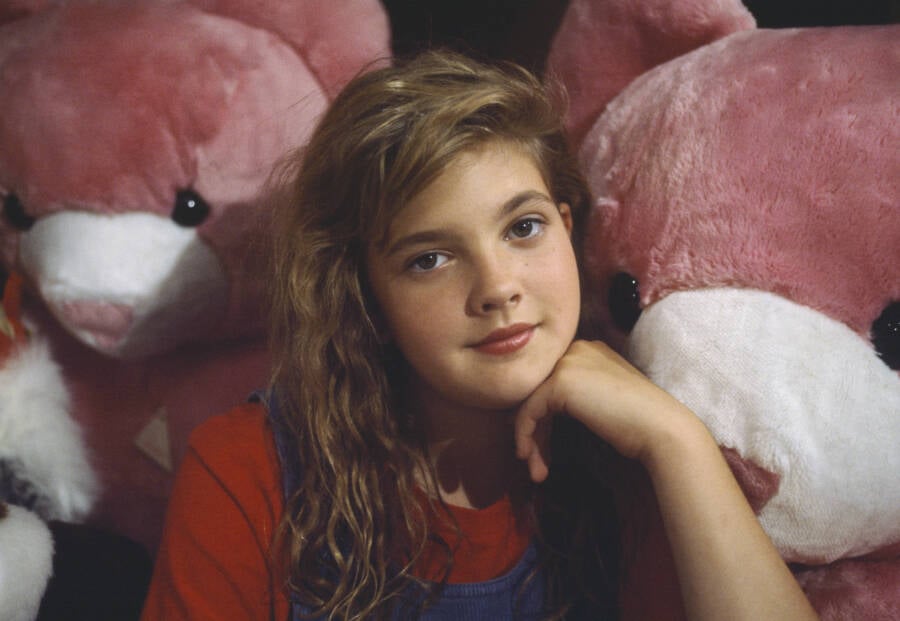
Pierre Perrin/Sygma via Getty ImagesDrew Barrymore in 1986. She managed to escape the perils of child-stardom and went from being an underage party girl to a beloved actress.
Still a fan favorite after over 40 years in the entertainment industry, Drew Barrymore has had countless roles in classic films such as ET, Scream, The Wedding Singer, Never Been Kissed, 50 First Dates, Fever Pitch, Blended, and more.
While Barrymore is known for her effervescent onscreen personality and relatable charm, many would be shocked to learn of the unorthodox life she led as a child.
Born in February 1975 to the highly-esteemed family of stage performers known as the Barrymores, Drew Barrymore had her first role as an actor at just 11 months old when she appeared in a dog food commercial.
Her career took off by the time she was seven years old with her first major break in the 1982 classic ET. What followed in the whirlwind of newfound fame were years of substance abuse and even a suicide attempt that forced her to be institutionalized at just 13.
Drew’s father, actor John Barrymore, was a violent alcoholic while her mother and manager, Jaid Barrymore, had no discernible sense of maternal instinct. Jaid quickly began taking her young daughter to the infamous Studio 54 when she was just nine years old.
While spending more and more time at the club, Drew began experimenting with drugs and alcohol, all while her mother encouraged her to dance with famous men.
A self-described “party girl” before she was 12, Barrymore spent the majority of her time going out with her mother and her friends up to five times per week.
At 13, she was placed in the care of a mental institution at the recommendation of her mother after becoming violent and suicidal. Spending 18 months in the institution helped the young Barrymore to clean up her act.
In a 2015 interview with The Guardian, Barrymore openly discussed her unique struggles:
“But I realized, honestly, yeah, my mom locked me up in an institution. Boo hoo! But it did give an amazing discipline. It was like serious recruitment training and boot camp, and it was horrible and dark and very long-lived, a year and a half, but I needed it. I needed that whole insane discipline. My life was not normal. I was not a kid in school with normal circumstances. There was something very abnormal, and I needed some severe shift.”
Shortly after she was released, Barrymore became legally emancipated from her mother. Surprisingly enough, it was the institution itself that had initially suggested she separate herself legally.
While her time away from the wildness of Hollywood helped her to get clean, her career took a major hit.
Now a mother of two, running the production company Flower Films, and a beauty brand called Flower Beauty, Drew Barrymore has accomplished what can almost be considered the impossible — clawing one’s way out and away from the pitfalls of child stardom.
Macaulay Culkin And His Controversial Father Figures

The LIFE Picture Collection via Getty ImagesIn the wake of the massive hit film that made him a child star, Macaulay Culkin has had to navigate a life outside the spotlight that once followed him endlessly in the 1990s.
No child actor encapsulates the 1990s quite as well as Macaulay Culkin.
Known for his bright blonde hair and cheeky smirk, Culkin became a household name after the now-iconic Christmastime staple Home Alone. Though his star power increased quickly, his personal life was plagued by a rocky relationship with his father, legal emancipation at age 14, and a friendship with Michael Jackson that has left many with questions, doubts, and concerns.
Born in August of 1980 in New York City to former Broadway actor Christopher “Kit” Culkin and Patricia Brentrup, Macaulay Culkin was one of seven children, many of whom have also had careers of varying success in the entertainment industry.
Culkin landed his first acting role at age four in a stage production of Beach Babies at the New York Philharmonic.
After minor roles in some television programs throughout the latter half of the 1980s, Culkin’s first jump to the big screen was in 1988’s The Rocket Gibraltar followed by 1989’s See You in the Morning and then the John Candy classic Uncle Buck.
But it wasn’t until 1990’s Home Alone that Culkin had his major breakthrough — becoming the biggest child star in the world.
In the midst of his fame, Macaulay Culkin became a close friend of Michael Jackson’s, even starring in the King of Pop’s music video for the hit song Black or White. Culkin has long been part of the unsettling conversation that has surrounded Jackson for years regarding his inappropriate relationships with children.
Though Culkin testified during Jackson’s infamous 2005 trial that the King of Pop had never touched him inappropriately, he also confirmed that he did share a bed with Jackson more than 10 times. He added that the singer had an alarm on his bedroom door that would alert him if anyone were approaching or nearby.
“There was like a walkway kind of thing, where if somebody was approaching the door, it would kind of like ‘ding-dong, ding-dong,’” Culkin testified. “When anyone would approach the room, yeah, you’d hear this kind of soft kind of alarm, like ‘ding-dong’ kind of thing.”
Culkin also confirmed that he had traveled with Jackson on a vacation to Bermuda, spent a handful of evenings alone on Neverland Ranch, and had even been given a Rolex watch as a gift from the superstar.
Despite this odd set of circumstances, Culkin has mostly remained mum on the subject in recent years leaving the rest of the world to speculate, once again, on the secret life of Michael Jackson.
One of the biggest driving factors behind Culkin’s success was his management, run by none other than his own father. An actor himself whose career had cooled, the elder Culkin determined which films his son participated in, but behind the scenes, Kit Culkin was a tyrant.
In a revealing interview on Marc Maron’s WTF podcast, Macaulay Culkin claimed that his father was prone to threaten and humiliate his children. He even alleged that his father was jealous because “everything he tried to do in his life I excelled at before I was 10 years old.”
By the time Culkin was a teenager, his star status had begun to fade. With the failure of both The Good Son and Richie Rich, Culkin decided to officially take a hiatus from acting.
In 1995 when Culkin was just 15, he took his parents to court in the hopes of gaining total control over his $17 million earnings. The battle was arduous, bitter, and public, and ultimately ended with the child actor’s total emancipation. He received control of his money and estrangement from his father that still lasts to the present day.
To be sure, Macaulay has not been the only Culkin child to speak out against the patriarch. In an interview with Vanity Fair in December 2018, Macaulay’s brother Kieran commented about their father that:
“He’s not a good dude, but he wasn’t really a big part of my life after the age of 15. Sometime in the 90s, he went away and disappeared for two, three weeks, and the babysitter remarked to my mom, ‘You know what’s funny is their father’s been gone for three weeks, and not one of them has said, Hey, where’s Dad?’ Nobody cared, actually. My mom was the parent, so when he wasn’t there it was nicer and better.”
These days, Macaulay Culkin keeps a fairly low profile. He enjoys making music with his pizza-themed comedy-rock band called The Pizza Underground, and has even started his own comedy website called Bunny Ears in 2018.
Culkin may never achieve the level of super-stardom he saw at such a young age, but he is still remembered fondly by fans who grew up with his now-classic films and are happy he has emerged from the child-star machine relatively normal and relatively unscathed.
Perhaps it’s as simple as letting child actors be children first and stars second.

